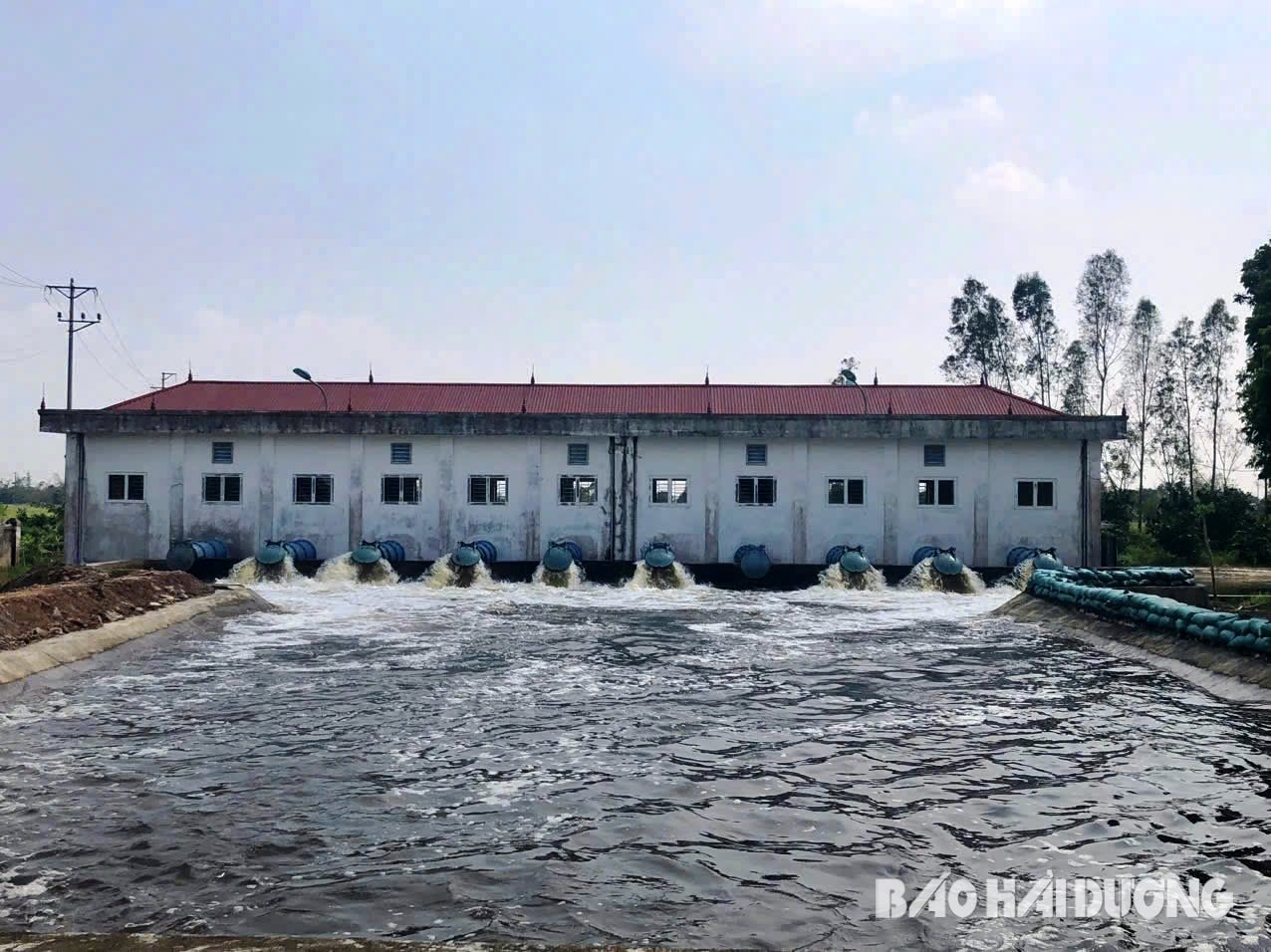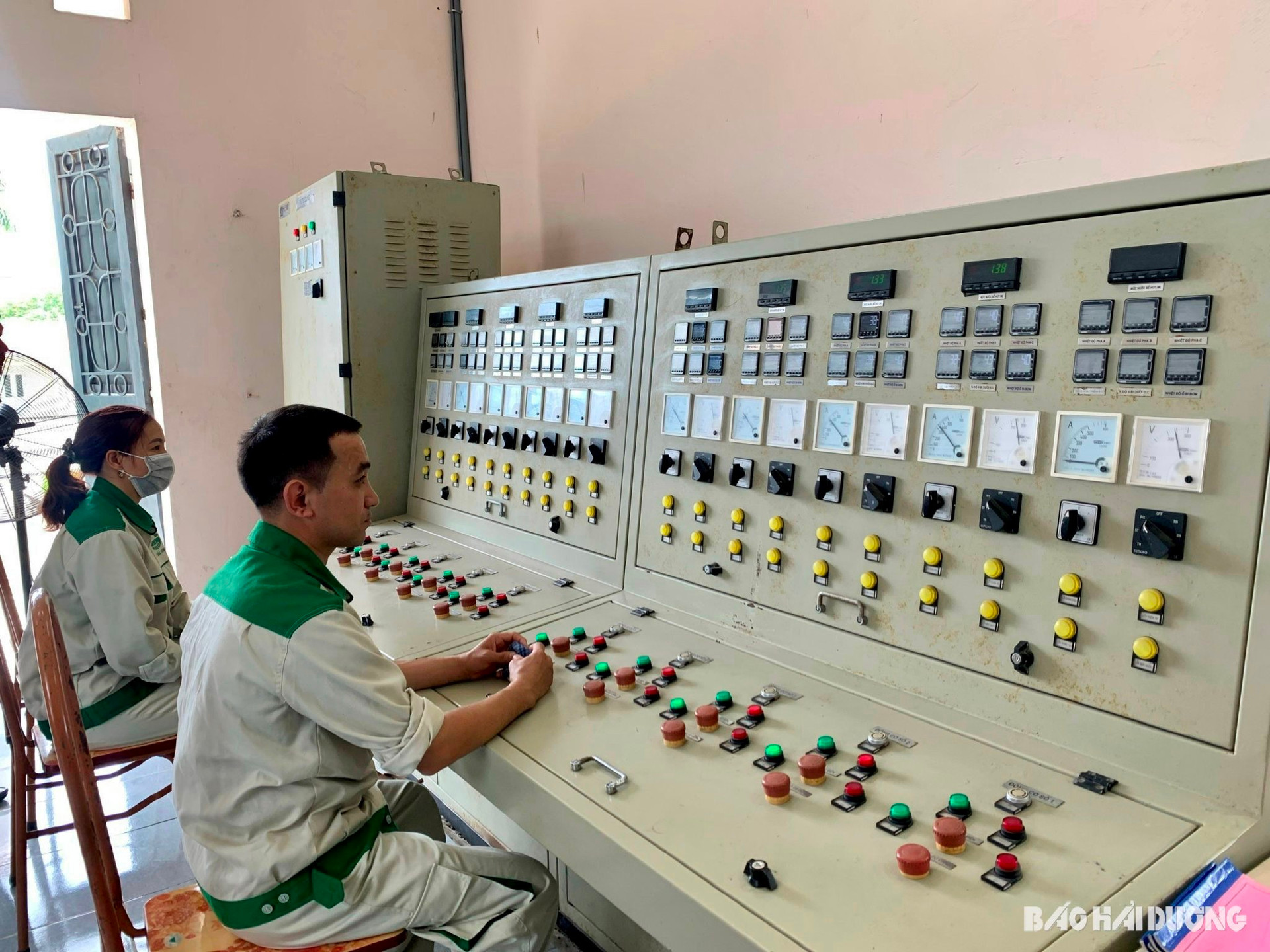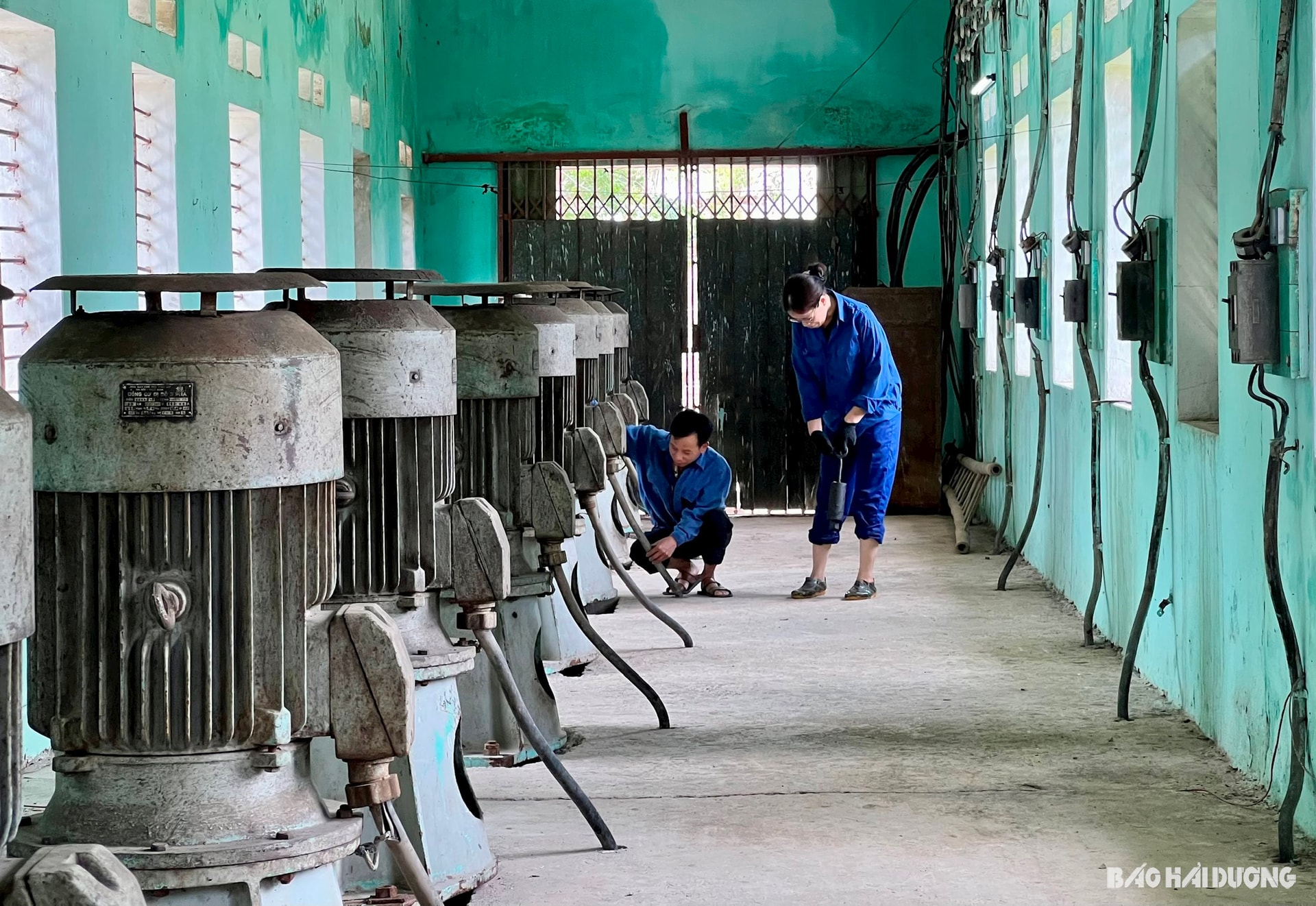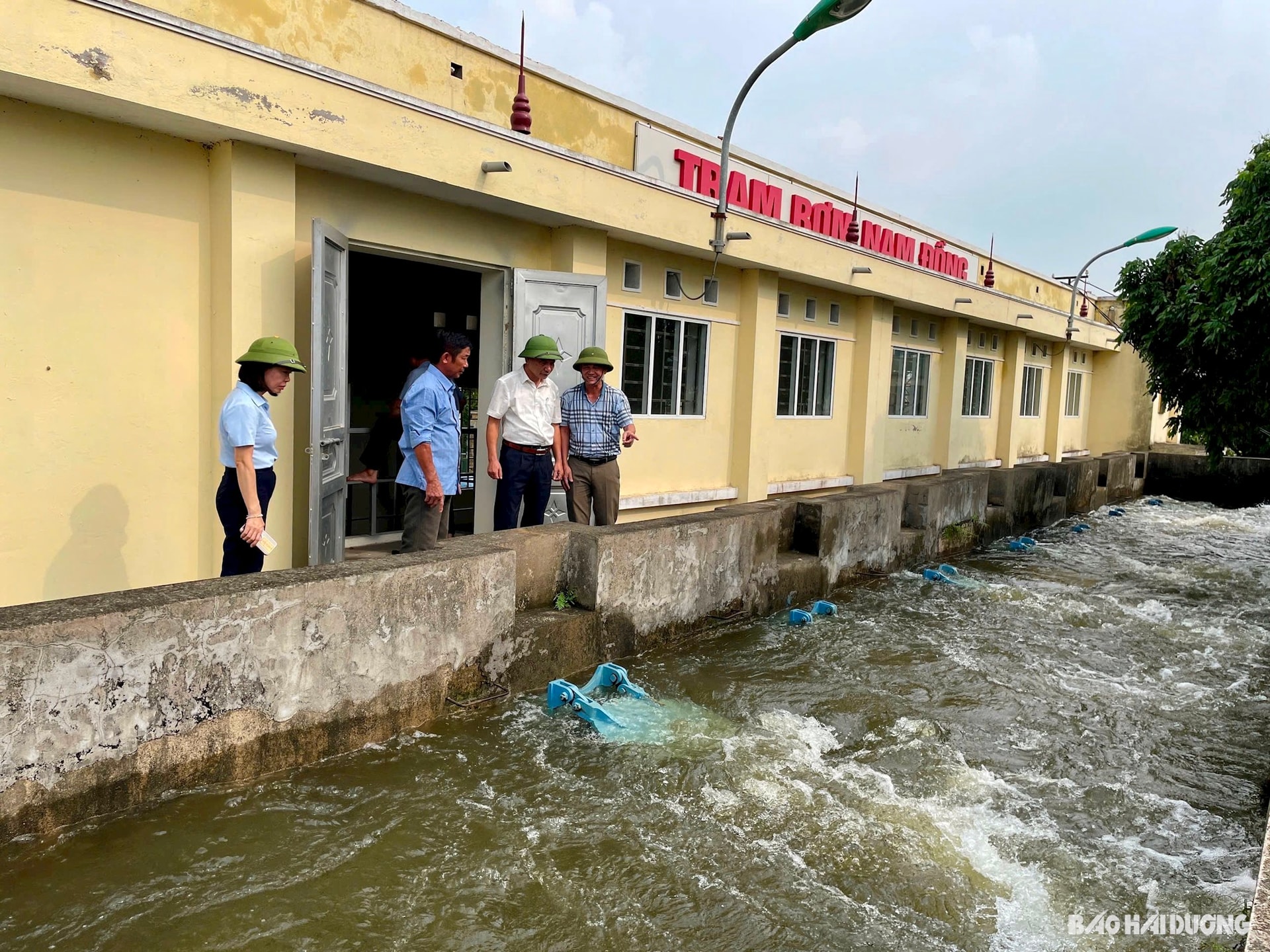After the water level of the rivers outside dropped to the alarm level, the water gradually decreased, many pumping stations in Hai Duong operated at full capacity to urgently drain the floodwaters in the fields, making efforts to save rice, vegetables, fruit trees and aquaculture areas.
.jpg)
Since September 14, when the water levels of the rivers have decreased, pumping and draining of flooded fields has been urgently deployed throughout the province.
According to Gia Loc District Irrigation Works Exploitation Enterprise, on September 15, the unit operated 17 pumping stations with a total capacity of nearly 150,000 m3/hour.
In Ninh Giang, by September 15, the Luoc River water level was below alert level I, 13 pumping stations with a total of 69 pumps were pumping simultaneously. This is the locality with the largest pumping capacity in the province with nearly 250,000 m3/hour.

Enterprises exploiting irrigation works, based on the production situation of each locality, divide the pumping and drainage areas appropriately. Priority is given to drainage for specialized vegetable growing areas, rice production, and concentrated aquaculture.
In addition to large pumping stations, commune-level pumping stations also actively pump and drain water, quickly draining it into the canal. Cooperatives proactively clear the flow to pump and drain water in a timely manner.

In addition to the pumping stations managed by the province, Bac Hung Hai Irrigation Works Exploitation One Member Co., Ltd. is operating at maximum capacity the My Dong pumping station. From September 11 to 13, the station had to stop pumping due to rising water levels on the outer river. Since then, the station has continuously operated 10 pumps to support drainage for agricultural production areas in Thanh Mien district.

According to Hai Duong Irrigation Works Exploitation One Member Co., Ltd., by noon on September 15, the unit had operated 106 drainage pumping stations with 541 pumps, with a capacity of more than 1.8 million m3/hour. The unit requires all officers and employees to be on duty at pumping stations to promptly handle situations during pumping and drainage. At the same time, it requires affiliated enterprises to temporarily suspend unnecessary tasks to focus on drainage.
